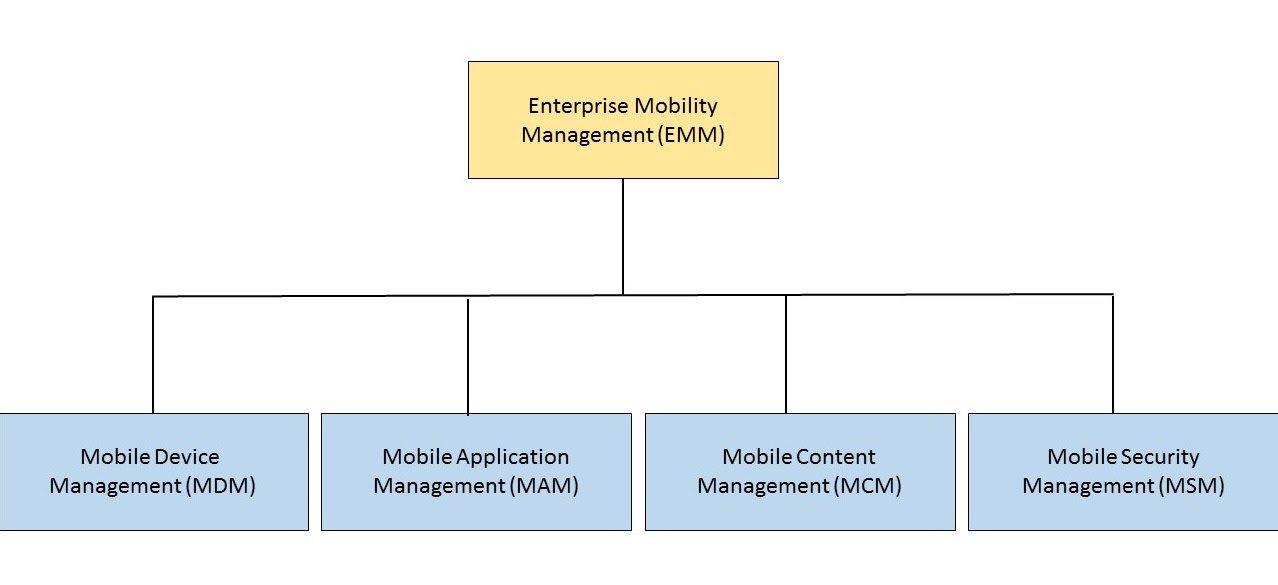Mobile device management started innocently to manage those pesky new mobile devices, but the need for MDM quickly grew into a gigantic problem
When mobile devices such as laptops first came on the scene, they represented a new challenge to enterprise network management now that the enterprise was not just desktop PCs that stayed in the office. Device management was straightforward: network management could see all the devices connected to the network and, therefore, it made it relatively easy for network administrators to keep track of all the desktop PCs and manage them. If they needed to change a system setting or add software, the administrator could easily do this at any time. After all, the desktop PCs were not going anywhere. If something had to be changed in all the organization’s desktop PCs, a simple command would apply to all of them.
But then laptops not only started to be used, they became so popular that some organizations switched to using laptops instead of desktops, since the fundamental characteristic of laptops was portability. They went home at night with the employee, but were not always connected to the network. This caused enterprise IT network administrators a great deal of pain when they had to make updates. Then, BlackBerry became popular in the enterprise, giving employees the ability to take email on the go.
Suddenly, mobile device management became a real, challenging problem for the enterprise. And, over the past 10 to 15 years, software has been developed to address the challenges of managing myriad mobile devices that has allowed enterprise IT network administrators the ability to give the control they needed to have, but adapt to the fact that these devices are sometimes connected and sometimes not connected.
This has given rise to the popular mobile device management sector of software, with a number of MDM software firms now having tens of thousands of customers. Research In Motion (now BlackBerry) was one of the first to do this by managing their own network. They created the BlackBerry Enterprise Server to help in the management process. Now, there are a number of companies that provide MDM services covering a wide range of mobile devices from smartphones to tablets to laptops and other mobile devices connected to a company’s network.
The major MDM suppliers include AirWatch by VMware; MobileIron; Citrix XenMobile; IBM MaaS360; SAP Afaria; Microsoft MDM; Symantec SMM; Zenprise; Tangoe MDM; BoxTone; McAfee EMM; MobileEngine Mobile Device Manager Plus; and Good for Enterprises by BlackBerry. There are many other vendors, so this list is not meant to be complete.
Now, however, the MDM sector is undergoing another migration from a focus just on the management of mobile devices to helping the enterprise manage all of its mobility assets including, but not limited to:
Mobile device management
o Centrally manages all mobile devices on the enterprise network.
o Enables verification that the right version of each software solution is on each approved app.
o Provides management with a summary of each device on the network.
o The MDM module assists IT professionals in enrolling, configuring, managing and deleting all mobile devices.
Mobile content management
o Secure containers set up for email, apps, browsing and content.
o Content can be maintained separately for personal and enterprise information.
o MCM provides a unified view of all secure content, apps, email and browsing.
Mobile application management
o Management of sourcing or developing an app.
o Applying security policies.
o Deploying an app catalog (“app store”).
o Analyzing app metrics.
Mobile security management
o Device and user security.
o Application security.
o Content security.
o Email security.
o Network security.
Thus, what started as a small effort to solve an enterprise pain point to handle the growing class of mobile devices has turned into a multibillion dollar industry. Any medium to large enterprise (including government organizations) needs to carefully define its requirements; and then determine which enterprise mobility management vendor will best serve those needs. You can see the summary of the transition in the following diagram:

As enterprise IT executives begin to talk with vendors, they will find that each one has some unique capabilities not found in other systems. Thus, the organization’s requirements may change due to discovering some capabilities that the organization didn’t previously notice. Enterprise IT should narrow down their candidates to three to four vendors, and then conduct a shoot out where you invite each company to present to a small group of people in the company; the evaluation team can rate the presentations on how well they meet the organization’s requirements. In addition, the IT department needs to evaluate which company will give them the best support after the sale.
Finally, and this may end up being the most important thing that an organization can do: make sure that the organization talks to at least one customer from each finalist supplier. Ask the vendor’s customer how they decided to choose their MDM/EMM supplier and why they selected the vendor they finally chose. This can often provide the organization with insights that it may not previously have been able to discover.
Now, organizations can effectively and efficiently manage their mobile devices along with desktop systems as well. The organization needs to think in terms of enterprise mobility management in order to ensure the mobile and wireless assets in the company will have all aspects of mobile device, content, application and security managed to as high a degree as possible.

Gerry Purdy leads AOTMP’s mobile and wireless practice. He contributes to AOTMP programs; authors “Mobile Letter,” a weekly syndicated column; and heads the annual Mobility Awards program. He is widely quoted in the press, and has appeared on a number of TV news shows such as MSNBC, Fox Business and CNN regarding mobile and wireless products. Purdy has a Ph.D. from Stanford University, an M.S. From UCLA and a B.S. from the University of Tennessee. Contact: Gerry.Purdy@aotmp.com, mobile 404-855-9494.
Editor’s Note: In the Analyst Angle section, we’ve collected a group of the industry’s leading analysts to give their outlook on the hot topics in the wireless industry.

